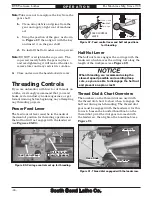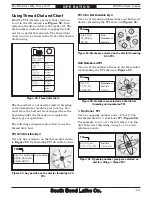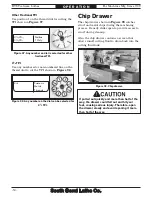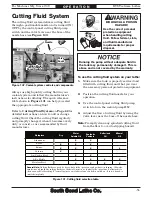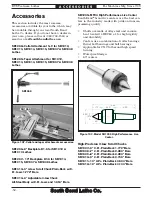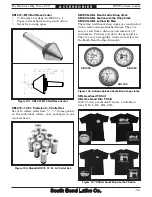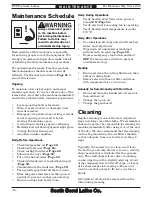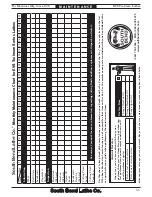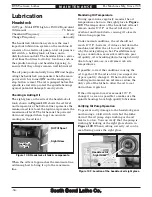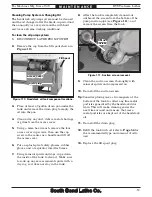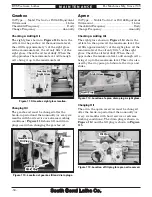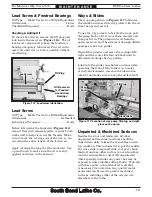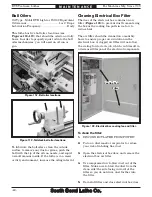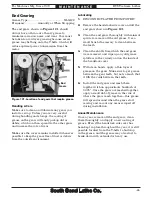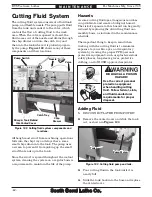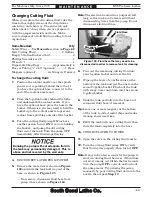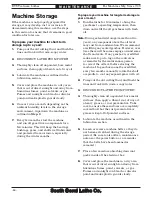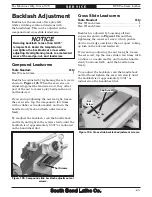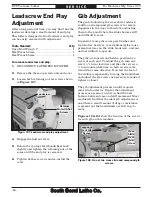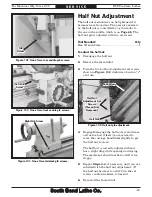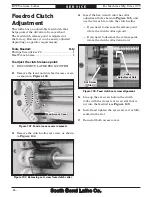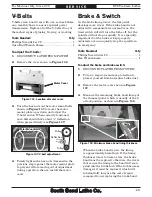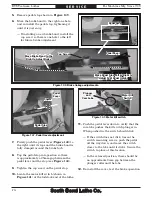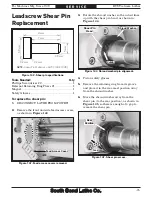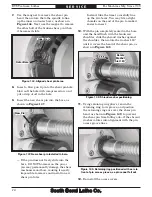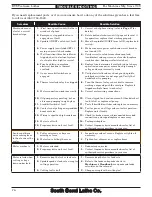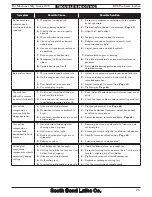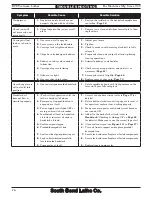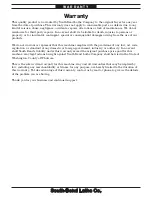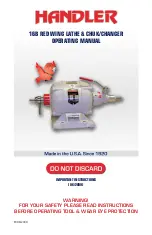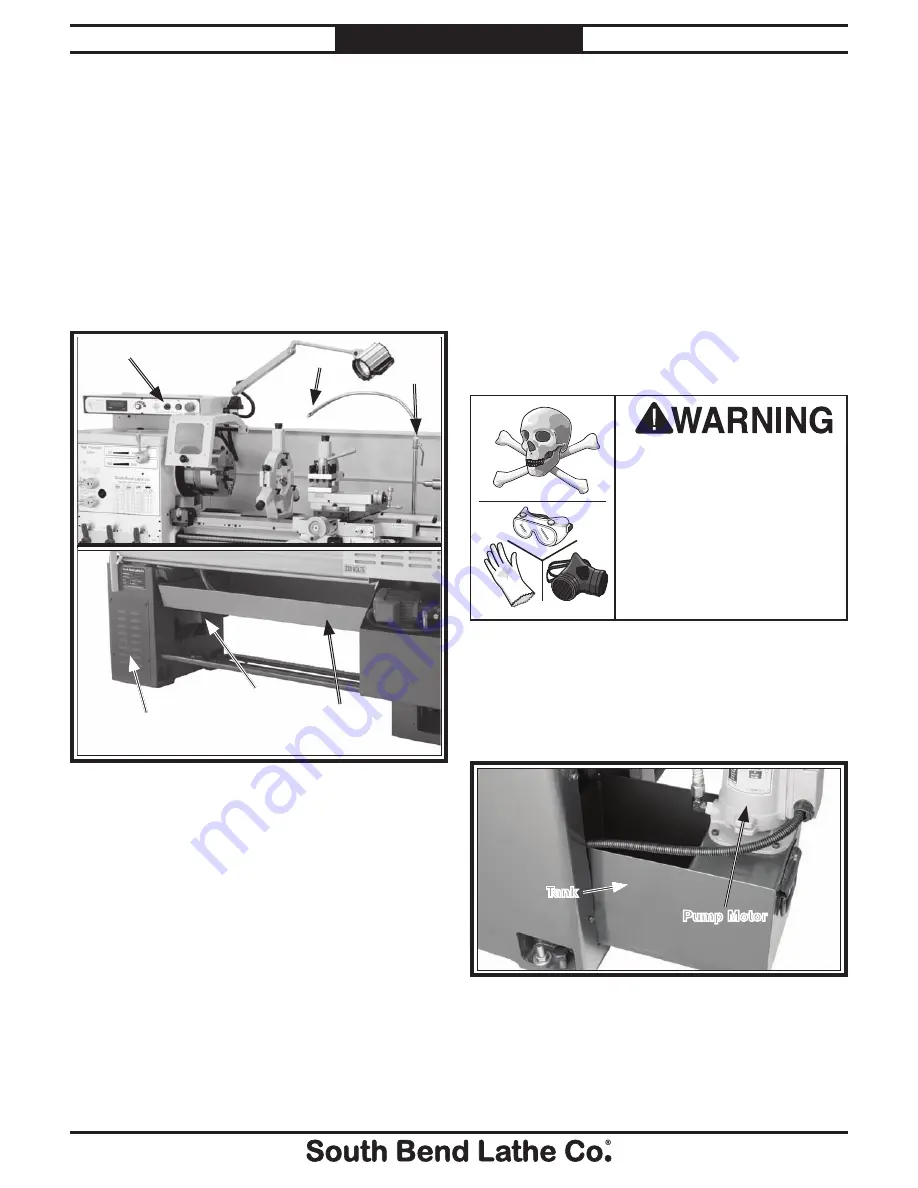
-62-
For Machines Mfg. Since 7/09
EVS Toolroom Lathes
M A I N T E N A N C E
Cutting Fluid System
The cutting fluid system consists of a fluid tank,
pump, and flexible nozzle. The pump pulls fluid
from the tank and sends it to the valve, which
controls the flow of cutting fluid to the work
area. When the valve is opened or closed, the
fluid comes out of the nozzle and drains through
the chip drawer and into the catch tray and
then into the tank where it is picked up again
by the pump.
Figure 122
shows many of these
components and their locations.
BIOLOGICAL & POISON
HAZARD!
Use the correct personal
protection equipment
when handling cutting
fluid. Follow federal, state,
and fluid manufacturer
requirements for proper
disposal.
3.
Pour cutting fluid in the tank until it is
nearly full.
4.
Slide the tank back into the base and replace
the vented cover.
Adding Fluid
1.
DISCONNECT LATHE FROM POWER!
2.
Remove the vented cover and slide the tank
out, as shown in
Figure 123
.
Figure 123. Cutting fluid pump and tank.
Tank
Pump Motor
Although most swarf from machining operations
falls into the chip tray and stays there, some
small chips drain into the tank. The pump uses
a screen to prevent it from picking up the small
swarf that ends up in the tank.
Since the swarf is spread throughout the coolant
system, cleaning the system on a regular basis is
a requirement to maintain the life of the pump.
Figure 122. Cutting fluid system components and
locations.
Nozzle
Pump Switch
Valve
Pump & Tank Behind
this Vented Cover
Catch Tray
Chip
Drawer
Hazards
As some cutting fluid ages, dangerous microbes
can proliferate and create a biological hazard.
The risk of exposure to this hazard can be greatly
reduced by replacing the old cutting fluid on a
monthly basis, as indicated in the maintenance
schedule.
The important thing to keep in mind when
working with the cutting fluid is to minimize
exposure to your skin, eyes, and respiratory
system by wearing the proper PPE (personal
protective equipment), such as splash-resistant
safety glasses, long-sleeve gloves, protective
clothing, and a NIOSH approved respirator.

